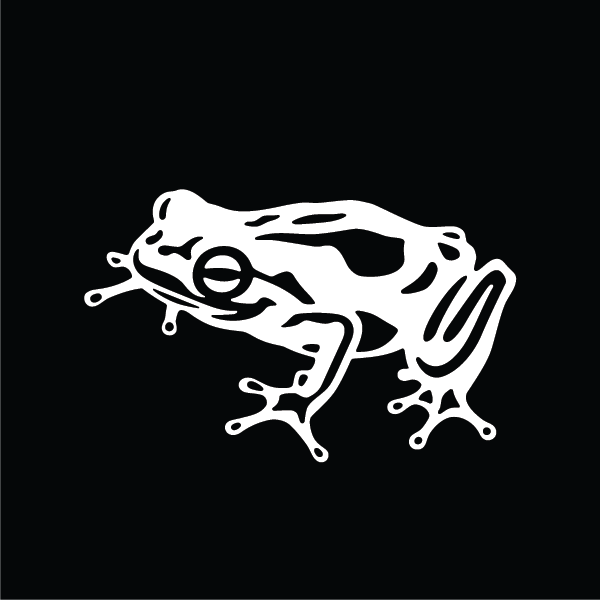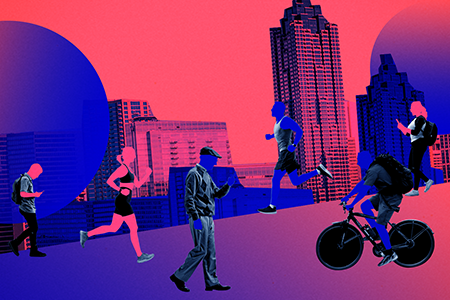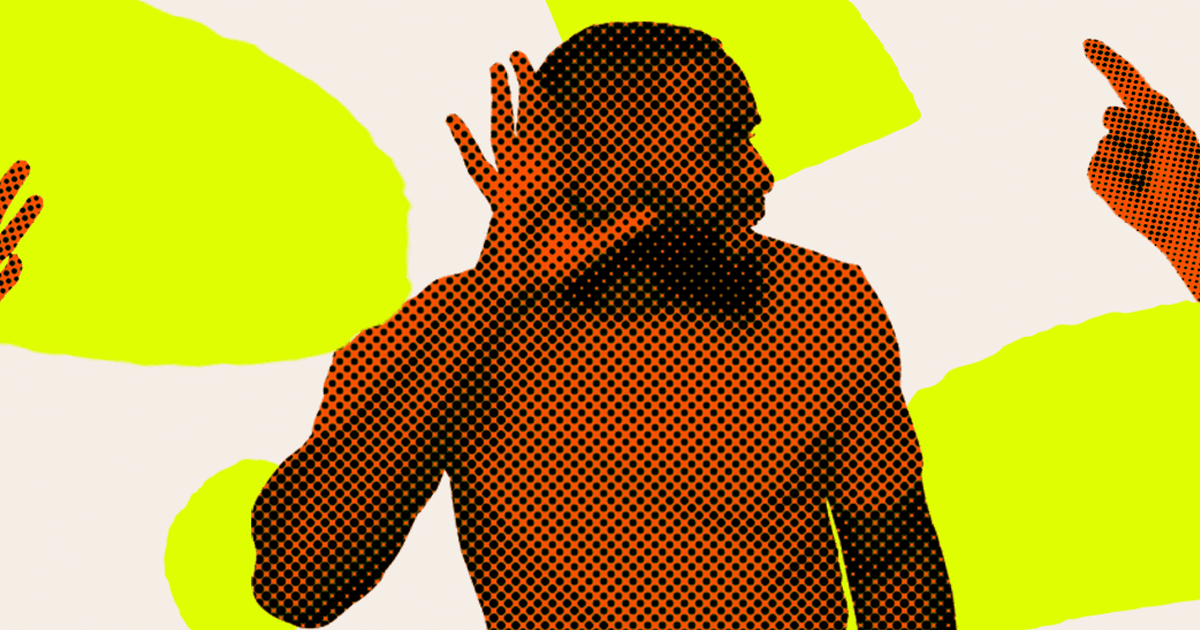
Changing Minds to Change Diagnostics
frog partnered with leading multinational healthcare company Roche for an Org Activation project aimed at deploying user and customer experience-centered design in the complex and changing world of diagnostics. The mission was to reach far beyond the production of any singular framework or toolkit, but to instead pilot a stronger, design-led way of working from the inside-out.
Collaborating with DIA UX, Roche’s in-house user experience (UX) team, the work led to the design of tools and processes that are having an impact throughout the organization. Designers, strategists and program managers from frog studios were working alongside the Roche team for nine months of immersion and co-creation, designing tools and processes side-by-side to ensure feasibility and understanding in real time. The resulting strategic DesignOps approach removes traditional departmental and cultural barriers to success, reduces operational costs and guides Roche in maintaining their position as globally recognized pioneers in healthcare innovation.
We asked team members from frog and Roche to offer insights from the transformation process, to discuss how design is changing the field of diagnostics and to share what other large, decentralized organizations can learn from the work. We spoke with Matthias Leuthold, User Experience Strategy Lead at Roche Diagnostics, frog’s Turi McKinkey, Executive Director of Org Activation in New York and Malina Keutel, Senior Program Manager based in frog London.
With the current COVID-19 crisis, we are really seeing the impact that diagnostics can have at a population level. It’s a critical part of the healthcare system.
What are the common misconceptions around diagnostics?
Matthias Leuthold (ML): What makes Roche unique is the close collaboration between Pharma and Diagnostics. It is often neglected how crucial this combination is for proper and more personalized treatment of patients. Diagnostics is the foundation for clinical visits and decisions. Despite that fact, diagnostics is sometimes seen as a pure cost driver. But with new and connected instruments in the labs and in the point-of-care setting, it’s much faster, and easier to make proper diagnostic decisions
Turi McKinley (TM): It wasn’t really a misconception, but for the frog team, we really needed to understand the unique business contexts of diagnostics. Often in healthcare work, you’re thinking about the doctor and patient relationship. Diagnostics is really more of a B2B business: the customer is the executive making large purchasing decisions for their ecosystem of labs, and the user is often a technician performing the diagnostics. To engage the broader organization, Roche’s DIA UX team needed to make sure they could talk about the impact they have in the context of both the customer and the user.
How is the role of diagnostics changing?
ML: First, there’s the ‘iPhone effect’. People working in a lab or working with diagnostic devices expect an iPhone-like experience. The second is that with the high training costs and an aging workforce in the labs, it is difficult to get highly qualified new personnel. It’s become even more important to design easy-to-use instruments and connected services. Along with physical devices, our teams are also working on related apps and exploring new services to complement the classic bread-and-butter instruments business.
Malina Keutel (MK): That’s something we learned right away from spending time at Roche—they’re increasingly looking at a portfolio of products and services that need to be connected and interoperable. There has been a move toward more interconnected, app- and web-based diagnostic systems that give physicians access to all of a patient’s data at one time, in one place, potentially in real time.
TM: With the current COVID-19 crisis, we are really seeing the impact that diagnostics can have at a population level. It’s a critical part of the healthcare system. So while most people don’t directly see the work of companies like Roche, they can see why it’s important work to get ‘right’ and to make as effective, useful and engaging for users and customers as possible.
Historically, what has been the role of UX at Roche?
ML: When DIA UX was formed about 12 years ago, a main focus was regulatory requirements. Human factors, such as the safety of using a tool, are part of the mandatory approval process by the FDA. The two-person team then steadily grew, expanding the mandate beyond regulatory to shaping better instruments by applying human-centered design principles. Over the years, the team has grown to over 50 designers supporting multiple R&D projects, researching user journeys and designing and testing the solutions. There is a unique look and feel to our instruments and user interfaces.
The team grew very fast and demand for our services was constantly rising. This led to other challenges in team operations, including maintaining design consistency and information flow. Our designers were deployed onto different projects, and it became more and more difficult to facilitate the positive exchanges, such as design rituals or co-creations, typical of a creative design team. When Cristina Barreca (Head of DIA UX) joined the team, she recognized the potential of the team and the opportunities ahead of us. That’s when frog joined the party.
TM: From frog’s point of view, this is something we’ve seen a lot with in-house teams. Initially, there’s this moment of real excitement and shared vision, but as the team grows it can be hard to maintain that unity. At Roche, we built out a hub-and-spoke model. The spokes are the individual projects, and at the hub is central leadership thinking through how to build solutions that cross-cut the organization. In diagnostics, this is especially important because a project can last years before it actually gets out to market. As a result, DIA UX designers often felt greater identification with their project teams than with DIA UX. Instead, they need to be able to support their projects and come back together to set a direction for best serving the business now, and for using design as a function to think about where the market is going.
DesignOps is a crucial addition to the team, which will support our designers in excelling at their work and making a true impact for our customers and users.
What role has DesignOps played in the transformation?
ML: We put a new leadership model in place. Before, it was not clear who was in charge of what, which made it hard to build capabilities, establish communication, offer thought leadership and pitch new projects. Now, the DesignOps model is an offspring of the new leadership model. DesignOps is a crucial addition to the team, which will support our designers in excelling at their work and making a true impact for our customers and users.
TM: The design team had enormous expertise and context for use of devices in the lab. Part of the transformation is beginning to think about the other skills a design team needs in an organization to join the conversation earlier and be part of the strategic shaping of UX/CX initiatives.
MK: A big part of our work was creating rituals and moments to bring them together. This meant building on the work DIA UX had already been doing, such as establishing UX boards for cross-disciplinary sharing, but also looking at team allocation, as in how much time is spent on projects and how much time is spent strategizing as a team.
What proof points were established to ensure the work will lead to long-term success?
ML: We put pretty straightforward KPIs in place, such as time spent on capability work. Others are qualitative measures, like freeing people to move between projects, to share opportunities and learnings. We also keep track of where we use and leverage new assets and share project results with the entire organization. It’s a constant reminder of what we have all achieved so far. Roughly every three months, we check in with the entire team through a survey and follow up with 1:1 discussion. We want a sense for how the team is feeling, where we need to work harder and if they’re excited.
How has the work been received by teams and stakeholders?
ML: We’re on the right path. I would like to quote one of our R&D project leaders: “We had to bring multiple cross-functional teams from three companies together and create an outstanding customer experience. I have been very impressed and I am truly thankful for DIA UX efforts. Great results can only come from a positive attitude, collaborative spirit and fun. Together we have achieved something remarkable.”
We went for frog because we felt a strong connection of designers talking to designers. From the DIA UX team’s feedback, they felt safe working with frog’s team. Many were excited and took the opportunity to actively shape the new way.
TM: We felt that way with your team as well—that we were helping people like us expand their impact within their organization.
What’s next for the transformation within Roche?
TM: The most satisfying thing was hearing from the team members at the end of the year that they really felt a new sense of momentum and that they were excited about it. We’ll continue to be curious about how things evolve. It’ll be great to see what the team can do with all these changes.
ML: This was just the beginning and we will continue improving our way of working. At a recent all-team info-session, we presented the impact of the work over the last 12 months and it made me feel proud to see how much we all had achieved. We want to continue to build our capabilities, train team members and continue the journey. Good things need some time to materialize.
This interview was conducted by Elizabeth Wood (Editorial Lead, frog EMEAI) and has been lightly edited for length and clarity.

frog, part of Capgemini Invent is a global design and innovation firm. We transform businesses at scale by creating systems of brand, product and service that deliver a distinctly better experience. We strive to touch hearts and move markets. Our passion is to transform ideas into realities. We partner with clients to anticipate the future, evolve organizations and advance the human experience.
We respect your privacy
We use Cookies to improve your experience on our website. They help us to improve site performance, present you relevant advertising and enable you to share content in social media. You may accept all Cookies, or choose to manage them individually. You can change your settings at any time by clicking Cookie Settings available in the footer of every page. For more information related to the Cookies, please visit our Cookie Policy.


